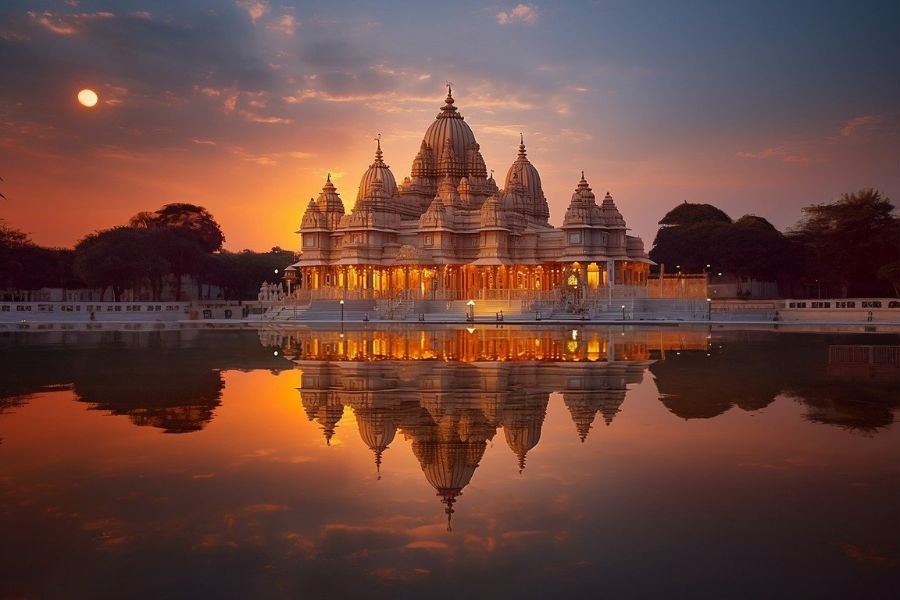Next step towards globalization of Bollywood

India’s entertainment sector has historically enjoyed a special appeal in CIS countries, especially Russia, as the Indian cinema once had good access to markets of the erstwhile Soviet Union. Other than this, the traditional markets where Indian films are released are the UK, the US and Australia – the countries that have a large diaspora population from the subcontinent. However, with the success of ‘3 Idiots’ in China, and of films like ‘PK’, ‘Dangal’ and ‘Raees’ abroad, Indian film producers and distributors have started looking at markets that do not have substantial Indian presence.
Big Bollywood producers who handle their distribution themselves and other distributors are increasingly focusing on less-explored markets. Late actor Sridevi’s ‘Mom’ was premiered in Moscow and Zoya Akhtar’s ‘Zindagi Na Milegi Dobara’ was shot in Spain which resulted in a many-fold increase of tourists to Spain.
This success of Indian films abroad and the industry’s potential to earn foreign exchange for the country has prompted Indian government to further explore avenues to export Indian films to CIS and other countries.
In this regard, Trade Promotion Council of India (TPCI) in association with Economic Diplomacy Division of the Ministry of External Affairs is organizing a closed door roundtable seminar on 15th March, 2019 at Videsh Bhawan (Mumbai), which will be chaired by Mr. Manoj K. Bharti, Addl. Secy (ED & States), Ministry of External Affairs (Govt of India) and represented by select producers and distributors of films, besides other stake holders and officials from I&B Ministry as well as Department of Commerce (Govt of India). The seminar is aimed at sharing and understanding the difficulties being faced in export of Indian films along with policy suggestions to catalyze the growth of the sector.
Thus, we are looking a scenario where the popularity of Amitabh Bachchan, the Khans (Aamir Khan, Shah Rukh Khan, Salman Khan, Irrfan Khan and Saif Ali Khan) and of Hema Malini, Priyanka Chopra and Deepika Padukone is capitalized to promote films in relatively unexplored countries like the CIS and GCC countries, Far East and Europe, not only to bring in more revenue but also to leave a cultural impact through India’s cinema in these geographies. “Besides the economic angle, it helps position our country to establish a strong foothold. Culture and content play an undermined role in geo-politics,” says Mohit Singla, Chairman, TPCI.
Bilateral Audio-Visual Services Trade: India-CIS and other countries
The audio-visual services sector is among the fastest growing in the Indian economy. This is one of the 12 champion service sectors identified by the Department of Commerce (Govt of India) to take India’s share in global services exports to 4.2% by 2022 from 3.3% in 2015. Bollywood itself churns out over 1500 films every year in 23 languages which see more than 2 bn ticket sales, making it the most prolific film industry in the world. Besides, on an average, Bollywood also produces more than a thousand short films annually in 52 different languages and dialects.
Similarly, India’s music industry is one of the largest in Asia. It is also one of the largest producers of original entertainment software. Indian radio and terrestrial broadcasting network took is one of the largest in the world. Personal, cultural, and recreational services exported by India was recorded at US$ 1.46 bn in 2016, out of which audio-visual services export is valued at US$440.8 million and the other related recreational non-audio-visual services were valued at US$ 1.02 bn. CIS imports of personal, cultural and recreational services were valued at US$ 1.70 bn in the same year, of which Russia alone imported US1.44 bn. India is a net exporter in the audio-visual services with a trade balance of US$210.6 mn.
And with about 30 million non-resident Indians around the world, there is no reason why India should not eye the world market for its audio-visual services sector. TPCI is moving ahead to tap the immense potential that India needs to negotiate and push for audio-visual services export beyond reciprocal support of the national film festivals to the CIS countries, primarily Russia and Ukraine.
The Bollywood Scenario
The joyousness, colour, beautiful people and stunning locales of Hindi films is increasingly attracting the world audience as they offer viewers an escape into a dream world of shared values, something that the Western cinema doesn’t.
There was a period when films like Raj Kapoor’s ‘Mera Naam Joker’ enjoyed an iconic status in the erstwhile USSR. Thereafter, around the turn of the century, Bollywood filmmakers like Karan Johar and Aditya Chopra first began wooing a global audience through films like ‘Dilwale Dulhaniya Le Jayenge’, ‘Kal Ho Na Ho’ and ‘Kuch Kuch Hota Hai’. In the later period, several producers and distributors started focusing on foreign markets. Films like the Aamir Khan-starrer ‘PK’, earned more than 30% of its box-office revenue from international markets, earning more than US$ 120 million dollars from outside India. Another blockbuster ‘Dangal’ too earned similar amount while the 2009 Rajkumar Hirani blockbuster ‘3 Idiots’ went on to become a big success in an altogether unexplored territory – China.
The globalization of Bollywood has also led to strategic partnerships: Anil Ambani’s Reliance Big Pictures invested $325 million for a 50% stake in Steven Spielberg’s Dreamworks, besides other tie-ups with US production houses owned by the likes of Nicholas Cage, Jim Carrey, Tom Hanks, Brad Pitt, Julia Roberts and George Clooney. The company also acquired American movie theatres to showcase Indian films in areas with larger Indian communities. UTV Motion Pictures co-produced two films with Fox Searchlight and one with 20th Century Fox. And this is besides the several investments that global movie majors Walt Disney, Sony Pictures Entertainment Inc. and Fox Star Studios have continued to make in Bollywood films since 2007. More recently, Reliance Entertainment produced Indo-French movie ‘nOmber One’ with France’s Rogue International, and starring Julie Gayet.
Governments and tourism boards across the world have of late also woken up to the revenue generation opportunity of Bollywood. The Visit Britain and Swiss Info tourism websites list popular spots where Bollywood films have been shot in UK and Switzerland, including interactive maps that tourists can use to plan their route. A new amusement park inspired by Bollywood was launched in late 2016 in Dubai, featuring thrilling rides called ‘Don’, ‘Lagaan’ and ‘Sholay’ and a stunt show called ‘Dabangg’ among others. Bollywood magazines are now published in almost all languages, including one called ‘Ishq’ in Germany, where Shah Rukh Khan is particularly popular, and where you can find dance studios dedicated to Bollywood-style moves.
Several countries have also begun offering subsidies for Bollywood film shoots after noticing the accruing profit. From a few thousand Indian tourists in 2010, Spain saw an influx of 85,000 of them in 2011 after the release of Zoya Akhtar’s ‘Zindagi Na Milegi Dobara’, which was shot there. The Mediterranean country has since then proactively wooed Bollywood producers and event organizers alike. India now has several trade deals in place with Malaysia, Australia, Fiji, Italy, Germany, France, Czech Republic, Ireland, Turkey, South Africa, Mauritius, Canada, UK, US and others for incentives including cash grants and tax credits going from 20% to even 50% on film production costs if criteria such as dubbing in local languages and use of local talent are fulfilled.
The foreign-exchange earning potential of audio-visual services, including Bollywood, is immense. Bollywood talent has gone global with actors like Deepika Padukone, Priyanka Chopra and Irrfan Khan working in Hollywood films. Indian films are immensely popular not just among Indian diaspora but also connects emotionally with other regions.
Says Mohit Singla: “The success of ‘3 Idiots’ in China has given great confidence to industry that Indian films can do well in captive and not so captive markets outside. Indian cinema is largest after Hollywood and known for its lively and emotional content.”
Despite all these efforts, international box-office pie is responsible for only a 7% pie of the industry’s revenue, a figure that has remained constant over several years. This is why the seminar to be held in Mumbai seeks to remove the bottlenecks and pave the path towards further export of Indian films; a next step towards globalization of Bollywood.













I was looking for this information since long tie. Thanks for the detailed information. It helped me. Keep posting more such content.
3 Idiots
I found a lot of interesting information here. A really good post, very thankful and hopeful that you will write many more posts like this one.
bollywood news
Thanks for this wonderful article. It helped to figure out my information related to bollywood globalisation. Thanks
Admin Filmoogle.
Thanks for this beautiful article. Absolutely agreeing with you. Thanks Bollywood Box Office Collection